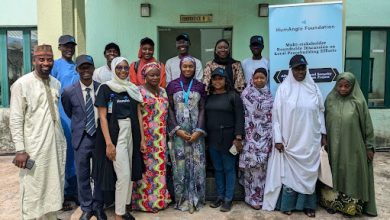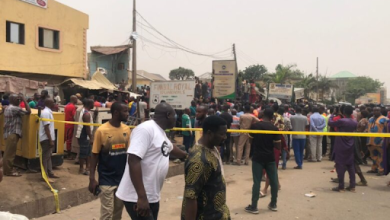2022 Rainy Season Has Increased The Volume Of Lake Chad – Report
The 2022 rainy season has helped farming activities in Lake Chad Basins. However, it has led to severe flooding in the Chari-Logone and Komadougou Yobe sub-basins.

Higher than usual rainfall is filling up Lake Chad as a result of significant flows into the Chari-Logone and the Komadougou Yobe tributaries of the Lake, according to a recent hydrological report.
The Lake Chad Basin Commission 2022 hydrological report disclosed that the rainfall helped farming in several localities. However, the resulting overflow of major rivers caused flooding and significant material losses and internally displaced persons in the region.
“The Lake is filling up rapidly, following higher than the average rainfalls of 1981-2010 recorded in the Lake Chad Basin in 2022,” the report said. Adding “its volume is comparable to that of an average lake with a surface area of about 24,000 km2”.
As of 20 October, the Lake water level was 280.59m, beyond the “Great Barrier” separating the south sub-basin from the northern axis.
The upper basin of the Chari-Logone recorded a steady rise in water levels at various stations in this area, particularly the Sarh Hydrometric Station in the Chari.
The continued increase in water level, which started in May, reportedly worsened in August and September due to the rains, reaching the first peak of 700cm on Oct. 2 and a second peak of 711 cm on Oct. 15, above the recorded peaks in the last decade.
The rise in the water level along Logone and Ngueli was said to have been significantly high, with a hydrometric station recording 800797 cm, the maximum level ever observed since 1961.
The rise was more prominent at the confluence of the Chari and Logone rivers, following the arrival of water from “the upper Chari basin and the peak recorded at Ngueli, Logone”.
As of October 20, the water level on the Chari in the Chadian capital, N’Djamena, continues to rise, with the first peak of 806 cm, exceeding records in recent decades.
The water volume caused large-scale damage in the capital, with an estimated 98,785 people affected and 16,756 households forced to flee their homes and take refuge in public space, according to an Oct. 31 UNICEF report.
The Komadougou Yobe river experienced an early and rapid rise in water levels from July and exceeded records observed in about a decade. Readings showed that its alert threshold of 449 cm was surpassed on Sept. 22 and reached a maximum of 558 cm on Oct. 4.
The report states that “after a slight drop, the water level of the Komadougou Yobe in Diffa continued to rise, reaching a maximum of 578 cm on October 21, 2022, the highest ever recorded since the station was created in 1957”.
HumAngle has previously reported on the flooding of Nigerian and Nigerien communities near the river system originating from Nigeria. In the Nigerian town of Mallam Fatori, a temporary site for resettled refugees and a major military base was flooded.
The water level, upstream silting up of channels, and climate variability have contributed to the severe flooding and extensive destruction of material and farmland in Diffa.
The flooding situation in the Lake Chad Basin would have also been amplified by human settlement along watercourses and flood retention. As evident in the case of N’Djamena in Chad, Kousseri in Cameroon and Diffa in Niger.
“In most cases, flooding is caused by the effects of confluences, the degradation of
riverbanks and exceptional rainfall flowing from the upstream basin” the report noted.
Lake Chad is an important source of water and livelihood to millions of people in the four countries surrounding it – Chad, Cameroon, Niger, and Nigeria.
Support Our Journalism
There are millions of ordinary people affected by conflict in Africa whose stories are missing in the mainstream media. HumAngle is determined to tell those challenging and under-reported stories, hoping that the people impacted by these conflicts will find the safety and security they deserve.
To ensure that we continue to provide public service coverage, we have a small favour to ask you. We want you to be part of our journalistic endeavour by contributing a token to us.
Your donation will further promote a robust, free, and independent media.
Donate HereStay Closer To The Stories That Matter




